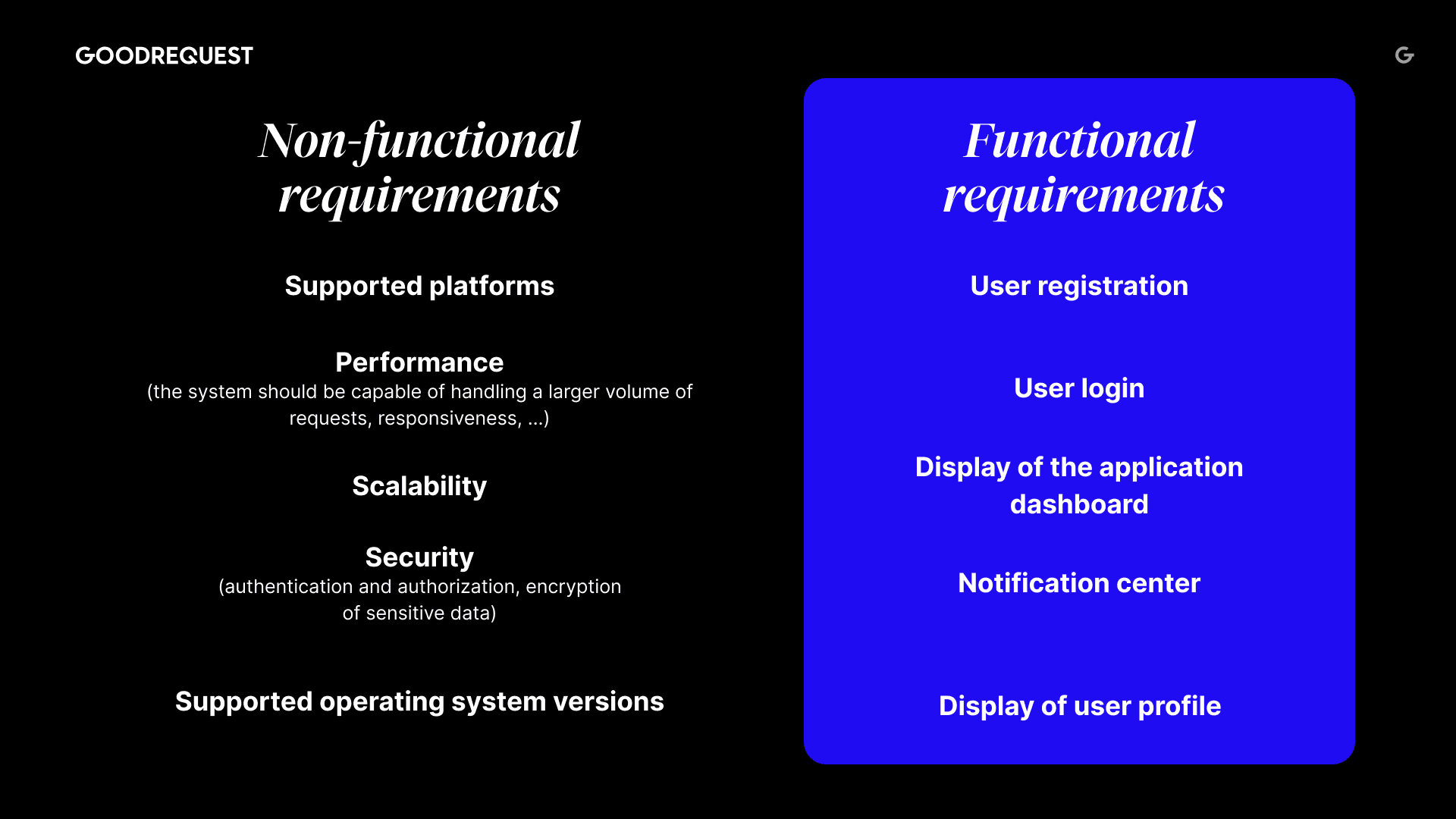
How to build AI solutions that deliver 10× more value for your business

Today, few people know the position of a technical analyst or the significance of technical analysis. However, for the software development itself and for clients, technical analysis is a important component. In this article, I would like to highlight the benefits it brings to the projects we work on and the challenges we encounter during projects and analyses.


In the first steps of collaboration with a partner, our company focuses on important phase: the design and analysis of the required solution. This stage represents the foundational cornerstone that enables us to better understand the customer's needs and goals. Our colleagues from the sales department often face with legitimate questions from clients:
We understand that many customers may not fully understanding the importance of analytical activities in software development. It is common for people to associate "software development" only with application programming, but the actual development process is much more complex.
Analysts play a key role in ensuring a successful project. They are interested into various aspects, including client needs, potential shortcomings, inconsistencies in requirements, and more. It's not just about what the customer wants, but rather about what they truly need. Their role is to uncover the essence of the problem the client wants to solve and help develop an appropriate solution.
We are fully aware that clients may not immediately see all possible behavioral scenarios, impacts, and potential software problems. That's why we focus technical analysis. This approach has helped many clients identify important aspects or issues that cannot be identified without a deeper analysis, avoiding potential complications that could prolong the development process.
Thus, a thorough analysis of client requirements is a necessary step that allows us to ensure efficient software development that fully meets the expectations and needs of our clients.

Technical analysis creates the support for developers and testers for individual solution functionalities. It is a process of dissecting and understanding business, functional, and non-functional requirements, transforming them into system technical requirements that clearly describe each part, function, and operation of the software. It defines the connection between design and backend, specifying how it should look versus how it should behave. Technical analysis serves as a guide for developers and the project team, assessing the technical feasibility of each requirement and often revealing issues that are not immediately apparent.

Thorough analysis is important for achieving a high-quality and efficient result that aligns with customer requirements and expectations.
Without thorough analysis, problems may arise, such as:
In most cases, analytical activities identify many real and potential problems. Analysts assess potential risks and, in collaboration with the team, specify possible solutions. From our experience, it is not often that projects have specifications and requirements so precisely defined that individual functions do not need to be analyzed and development is sufficient without additional questions. There are always numerous possible situations and uncertainties that may arise and are identified only through more in-depth analysis.
The most common client questions are: "How much and how quickly can you deliver the product valuable insights into answering these questions. If a client refuses the inclusion of an analyst in the project, the business department can only provide a rough estimate of costs and time frames, which are often significantly different from the final value. Technical analysis makes these estimates much more accurate. If the project were thoroughly analyzed, the overall estimated costs, timeline, size estimate, and complexity of the product can be much more accurate. Additionally, technical analysis serves for client as overall documentation of the final product and supports software maintenance and testing.
As a practical example, I would like to share feedback from one of our clients who appreciated the delivery of a technical specification based on their requirements at the beginning of the project. The client had a detailed description of the solution, allowing them to reconsider and enhance the requirements before actual development. The client had a more detailed description of the solution, allowing them to reconsider the assignment before actual development, address deficiencies, or enhance the desired solution.
'I really liked the detailed specification they provided at the beginning of the project based on our requirements. We could think about edge cases before implementation started.” Daniel Ferak, Business Unit Director, Innovatrics
Overall, in our project work, we see the added value and advantages of technical specifications for clients, such as identifying scenarios they might not have considered. All projects we have done analysis received positive feedback from both clients and the team. Efficiency increased, certainty improved, and project planning became more precise and client requirements were better understood. So the analysis has positively impacted not only the client but also the entire development team.
When it comes to reallocating the entire project among development, analysis, testing, and project management, consider this simple example: If the overall development of a product is estimated at 1000 hours of work, adding 15% for analysis, 15% for project management, and 15% for testing. In total, this increases the estimated work by 45%, or 450 hours. Of course, every project is unique, so this example is illustrative. For larger or more complex projects, analysis may be estimated at 20% or more. It is truly individual.
The key for creating a quality specification is to be clear and concise, provide complete information, and organize descriptions systematically and logically. A good specification should include:
Analysis and the creation of technical specifications are key steps in software development. They provide a fundamental framework for the project and contribute to its success. For clients, they mean more certainty and transparency; for the development team, they mean more efficient work and better project control. Technical specifications reduce risks, complications, deficiencies, and incorrect expectations. They are important documentation for the final product and support long-term software maintenance and development. Overall, they play a key role in achieving high-quality project results that meet the needs and expectations of clients.
Ask yourself: “Would you start building a house without an architect who designs your home?” It is important to understand that analysis and technical specifications are not costs but an investment in the project's success. It is like investing in a quality plan before building a house, preventing missteps and future problems.






